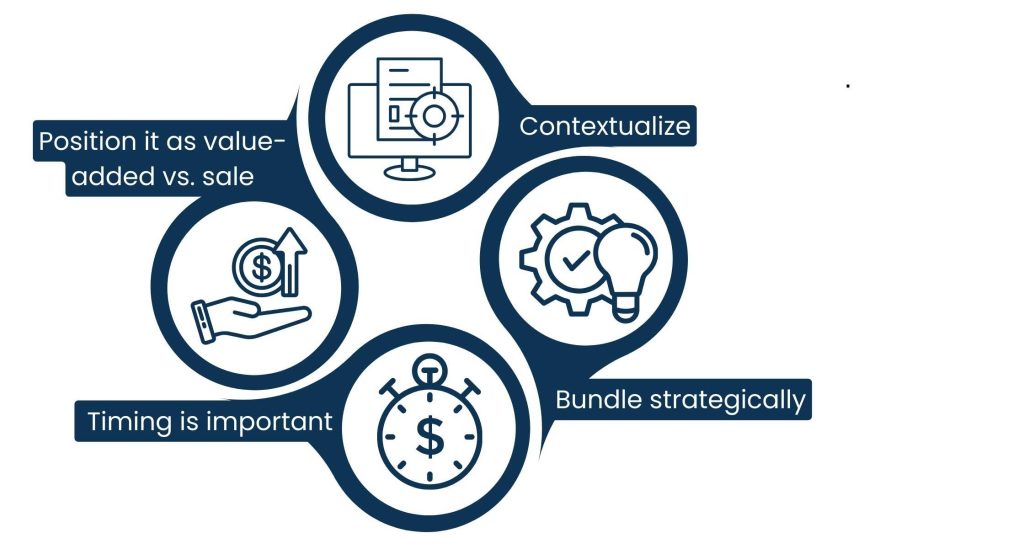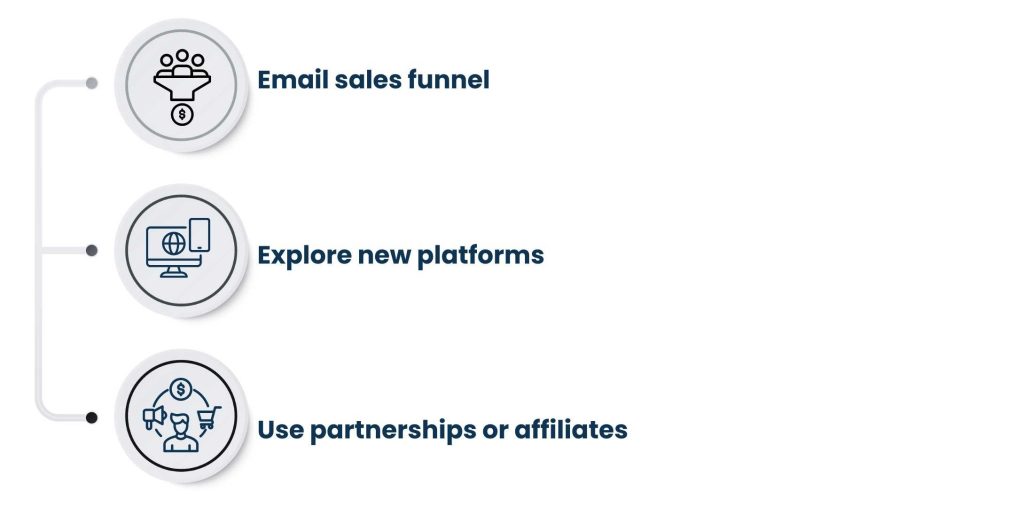Introduction
Growth is not by chance in the competitive world. It is deliberate, methodical, and guided by clear, strategic choices.
Whether you’re a solo entrepreneur or a small team, you must have already understood that sticking to getting more customers is not the solution all the time. It’s all about how you set up your offers, streamline operations, and scale revenue in a sustainable way.
That’s where well-thought-out revenue growth strategies come into play.
In this blog, I’ll share the most impactful strategies every business should leverage: pricing and customer retention, digital transformation, and outsourcing. No fluff, no theory — only practical methods to become smart.
The Importance of a Revenue Growth Strategy
Let’s face it, running a successful business is hard work. The rest of us have teams to manage and clients to serve and fires to put out on a daily basis, and we rarely take the time to zoom out far enough to see the big picture. But the reality is this: without an effective revenue growth strategy, your business will hit a wall.
Sure, you might be making sales, but unless you have a roadmap for how to scale those numbers profitably and sustainably, you are just spinning your wheels. This is why having a revenue growth strategy is not just a nice-to-have; it’s essential.

Here’s the key to a good strategy:
1. Recognize What’s Working and Double Down
When you grow strategically, you stop guessing. You can review your numbers, assess a campaign, a service, or a customer segment, and identify exactly what’s generating the most income. “Once you know that, you can stop spreading yourself thin and double down on the channels, offers, and types of customers that deliver results.” Growth is less about hustle and more about focus.
2. Don’t Even Waste Your Time on Low-Value Efforts
Without clarity, it’s easy to get stuck in “busy work” mode, where you feel like you’re making progress but aren’t moving the needle. It could be any aspect of hanging on to a service that’s no longer selling well, or posting on every social platform and getting no results. A revenue growth strategy requires you to examine the ROI on your time and energy, so you can eliminate what’s not producing and take back hours that could be better spent doing high-impact activities.
3. Create Systems to Scale Sustainably
Growth shouldn’t mean chaos. A good strategy involves building systems and processes to scale your business without crumbling your team (or yourself). This includes automating, streamlining client onboarding, refining service delivery, and defining clear roles. Scaling becomes easier, not harder, when your systems help you focus on your goals.
4. Increase Profit Without Getting Burned Out
More revenue is nice — but not if that revenue is at the expense of your health, freedom, or sanity. A growth strategy allows you to earn more while working smarter, not harder. This could mean increasing prices, tweaking your offerings, or outsourcing non-core functions. The point is to expand deliberately, so that you’re not just working more and more to make more.
A clear revenue growth strategy helps you stay in your lane, guides you to make better decisions, and enables you to build a business that serves you, instead of making your life more difficult.
Also Read: Virtual Assistant Services in Leeds
8 Proven Revenue Growth Strategies For Business Owners And Entrepreneurs
The key to growing your business isn’t doing more — it’s doing what works. These 8 proven strategies are what the real entrepreneurs use to increase revenue, save time, and scale without sacrificing themselves in the process.
1. Focus on High-Value Customers
Not every customer is created equal — and that’s a good thing. It’s one of the big lessons for business growth.
Some clients spend more, are stickier, refer other clients, and require less hand-holding. These are high-value customers, and concentrating on them can have a drastic impact on the revenue without additional effort on your part. It’s a smarter way to grow.

How to do it:
- Break down your customer base by lifetime value (LTV). Find out which customers donate the most over time. It’s not always the biggest spender on a single transaction — it’s usually the one that comes back again.
- Market and outreach to what matters most, 80% of your revenue often comes from that top 20% of customers, so center your ads, emails, and outreach on them. These are the individuals who are more prone to converting again.
- Design special experiences, implement loyalty programs, VIP upgrades, or provide early access to new services. It’s important to make your best customers feel appreciated and valued.
By concentrating on high-value customers, you strengthen relationships, get better retention, and profit the most, without the constant hustle for new leads. That’s working smarter, not harder.
2. Raise Prices Strategically
One of the quickest and most effective ways to grow revenue is frequently the one that nearly all business owners aren’t doing: increasing prices.
Half the time, I find entrepreneurs aren’t charging enough, not because they haven’t made a valuable offer, but because they are afraid of losing customers or believe the market will not pay them more. But pricing is not merely a means of covering your costs — it is a question of demonstrating the value you provide. And if your product or service solves a valuable problem, more than likely, you’re worth more than you’re charging.

How to do it:
- Start at your value: Are you saving time, making money, and eliminating stress for your clients? Those are high-value results, and people will pay more to get them.
- Test a small increase with new customers: Before implementing a price change for everyone, test it out on new leads or one service tier. It gives you confidence and real data on how people respond.
- Offer increased perceived value: You have greater justification for a price increase when accompanied by an upgrade, such as better support, faster turnarounds, or additional bonuses. You are focused on telling people what happens and not just about the features.
- Communicate confidently: Price changes do not need long-winded justifications. Speak concisely and assertively. The customers you want won’t bat an eye — they’ll appreciate it.
Strategic pricing is not necessarily about ripping off your clients, but rather, correctly positioning your service and making your business model more sustainable.
3. Improve Customer Retention
Acquiring new customers is surely important, but retaining the ones you have is where long-term profit lies. Retention tends to be neglected because it isn’t as sexy as acquisition, but the truth is, it’s cheaper and also much more profitable.
When it comes to improving customer retention, studies have shown that increasing it by just 5% can lead to a profit increase of between 25% to 95%. Why? Because return customers already trust you, need less convincing, and will probably purchase again, especially if the first experience went smoothly.

How to do it:
- Create a post-sale follow-up system: Send a thank-you email, ask after delivery, or offer tips related to what they purchased. That small gesture can create repeat business or referrals.
- Introduce loyalty or referral programs: It gives current customers an incentive to stay attached to your business, discounts, perks, or points that can be redeemed at a later date. If they love what you sell, they’ll tell everyone else.
- Keep your name in front of them: Use email marketing or content updates to stay in contact. Share more than just promotions — share value to stay top of mind.
- Request feedback, and respond to it: Show your customers that their experience matters. When they do feel heard, they stay longer.
- Retention isn’t about working harder: it’s about making customers feel like they are making the right choice, so they keep choosing you instead of your competitors.
4. Upsell and Cross-Sell Smarter
The simplest person to sell to again is a customer who’s already trusted you, and that’s where upselling and cross-selling things to your current customers.
Too many businesses leave money on the table because they view the sale as a finish line. But in fact, that initial purchase is the start of a longer-term relationship. “If you’re not providing more value when it’s timely, you’re leaving revenue on the table and also not serving your customers in the best way possible.

What’s the difference?
- Upselling means providing a more premium version of what a customer is already purchasing
- A complementary product or service that adds value to the primary purchase is cross-selling
How to do it effectively:
- Contextualize: Don’t force random upgrades. Promote add-ons that naturally enhance or complete the consumers’ experience.
- Bundle strategically: Create a higher-value offer by packaging related services or products together. It simultaneously adds revenue while smoothing the decision process for the customer.
- Timing is important: Get the upsell or cross-sell in during checkout, onboarding or soon after the first purchase — at the point when engagement is strongest.
- Position it as value-added vs. sale: Explain how the offer addresses more of their challenge or makes their world just a little bit easier.
Intelligent upsells and cross-sells increase your revenue without the need to find new customers — it’s the very definition of working smarter.
Also Read: Virtual Assistant Services in London
5. Expand Your Sales Channels
If all the money you earn is through one avenue — referrals, Instagram, or a local network, for example — you’re one bad day away from losing everything. The portal will not step in to offer cash as they can afford to do so; big tech will re-demand $$ from you at the first sign of cash flow getting tight.
And that is why one of the best revenue growth strategies you can implement is diversifying the way and the place that you sell.
So the more interactions you have with potential customers, the more robust and scalable your business will be.

How to do it:
- Email sales funnel: Add a simple lead magnet (like a checklist or guide), gather emails, then set automated email sequences to send the leads over time. That gives you a dedicated channel to promote offers and keep on people’s minds.
- Explore new platforms: Selling on marketplaces like Etsy, Amazon, or any niche B2B platforms relevant to your industry. These platforms frequently come with an audience eager to make a purchase.
- Use partnerships or affiliates: Identify other businesses serving the same audience that are not direct competitors. Promote each other’s services as add-ons, or establish a referral incentive.
Restructure the contents throughout the networks. If you are already offering some blog designs or videos, share them with LinkedIn, YouTube, forums, and the industry to share various components of your crowd.
The more the sales channels = the more opportunities to scale. The objective isn’t omnipresence, but rather to be more in some of the right places.
6. Use Digital Transformation to Your Advantage
Digital transformation is more than a buzzword — it is a competitive advantage. It’s leveraging technology to automate the way your business operates, how you serve customers, and how decisions are made. Done right, it saves you time, increases your accuracy, and expands your capacity to grow.
Digital tools are now more affordable and accessible than ever for small businesses. You don’t have to have a technology department — you just have to have the right systems in place.

How to do it:
- Automate repetitive tasks: Use tools to take care of scheduling, invoicing, email follow-ups, lead tracking, and even social media posts. This reduces manual work and enables your team to spend time on high-value tasks.
- Implement a CRM (Customer Relationship Management system): CRMs help manage leads, track customer interactions, and maintain strong relationships. They are critical to delivering organized and scalable sales and service.
- Make your service process online: Take the paperwork, onboarding, contracts, or client reporting and move them to the Internet. This leads to a smoother client experience, minimizes errors, and accelerates delivery.
- Monitor performance through dashboards and reports: Understand what works in real-time. Digital platforms provide access to data about sales, customer behavior, and marketing ROI, enabling better, faster decisions.
Digital transformation is not replacing people — it’s empowering your business to grow smarter and serve better.
7. Simplify Operations for Higher Margins
Revenue is only one side of the equation — profit is what matters. You can produce fantastic top-line sales, but if your costs and waste consume most of it, growth only becomes painful and unscalable.
By streamlining operations, we mean tightening up what lies behind the scenes of how your business runs. It’s about cutting waste, eliminating bottlenecks, and ensuring that each hour worked or dollar spent is advancing the business toward its goals.

How to do it:
- Conduct a workflow audit: Take a close look at the way things get done. Are there repetitive, time-consuming, or legacy steps? Identifying points of friction is a first step in making things better.
- Standardize and simplify processes: It could be client onboarding, project delivery, or communication — develop simple, repeatable systems. When your team knows precisely what to do and how to do it, time is saved, and mistakes are minimized.
- Get rid of or renegotiate low-value expenses: Go over software subscriptions, vendor costs, or freelancer contracts. If something isn’t providing enough of a return, cut it or renegotiate terms.
- Free up time by delegating non-core tasks: Operational clutter — like email handling, scheduling, or document prep — kills productivity. Offloading this to a virtual assistant or streamlined tool can drastically improve your margins.
Just because all that behind-the-scenes manual busy work isn’t visible to anyone outside of your four walls doesn’t mean you can’t still grow — you simply don’t need to do more; you need to do what you’re already doing, but more effectively.
Also Read: Virtual Assistant Services in Manchester
8. Outsource Non-Core Tasks
If you’re building your company by yourself — emails, admin, invoicing, customer support, social media, and all the rest — you will eventually hit a wall. And every hour spent performing the low-value task is one spent away from strategy, revenue generation, or innovation.
That’s why outsourcing non-core tasks is one of the best revenue growth strategies. It’s not doing less work — it’s doing the right work.

What to outsource:
- Administrative work: Inbox monitoring, appointment scheduling, travel arrangements, document formatting — these all take time but do not directly impact revenue growth. This is something that a virtual assistant can do quite efficiently.
- Customer support: If you’re spending hours responding to the same questions or managing service tickets, outsource it to someone trained to respond quickly and professionally, without sacrificing quality.
- Research and data entry: These are essential yet also quite tedious. That gives you consistency while allowing you to spend your time on client calls or business development.
- Creative or technical support: Graphics to content writing, to updating the website? Outsource your weaknesses: If there are skills you either don’t have or don’t want to learn, hire freelancers or agencies to fill in those gaps.
If you outsource wisely, you have even more time to focus on the biggest decisions you can make. It’s one of the fastest out.
Conclusion
Hard work doesn’t automatically grow revenue. It evolves because you are working smart, focusing on the right areas, and have a plan.
The reality is that sustainable growth is the result of strategy, not hustle. It flows from understanding your highest-value customers, setting prices with confidence, optimizing your operations, and creating systems that won’t break when business picks up. These revenue growth strategies aren’t universal, but when used intentionally, even a few little shifts can make for big results.
Start with the low-hanging fruit. Maybe that means raising your rates slightly, automating your onboard
Every action you take to focus more on strategy and less on busywork moves you closer to long-term, scalable growth.
At Tasks Expert, we help business owners stay focused on exactly that — growth. We handle the time-consuming back-end work so you can lead, build, and scale with clarity and confidence.
About Us
Tasks Expert offers top-tier virtual assistant services from highly skilled professionals based in India. Our VAs handle a wide range of tasks, from part time personal assistant to specialized services like remote it support services, professional bookkeeping service etc. Furthermore, it helps businesses worldwide streamline operations and boost productivity.
Ready to elevate your business? Book a Call and let Tasks Expert take care of the rest.









